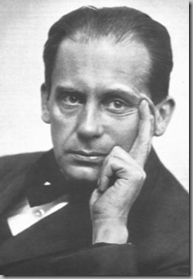World Trade Center Building, Baltimore, Maryland
Many moons ago I worked in this building (19th floor). Little did I know when I took the job (again…this was a long time ago and I was not well versed in architecture then), did I realize that this building was designed by the famous architect, Ieoh Ming Pei, or as many of us know him, I.M. Pei.
It was not until many years later, when I started following my passion for design and architecture that I learned about this incredible man and his incredible array of work.
I.M. Pei: Complete Works'>I.M. Pei Complete Works
Ieoh Ming Pei (currently 91 years young), commonly known by his initials I. M. Pei, is a Chinese-born American architect, known as the last master of high modernist architecture. Pei is perhaps one of the most successful Asian architects of the 20th century, with his works all over the world. If you don’t know who I.M. Pei is, I’m sure you will recognize a lot of his work.
Pei’s mentor was Ludwig Mies van der Rohe. Not a bad role model, eh? With an Architectural degree from Massachusetts Institute of Technology (MIT), Pei developed his architectural style through his peer influences. In fact, in 1945, Pei received a position as assistant professor of design to Harvard where he happened to work closely with two of the leaders of the Beaux-Arts movement, Marcel Breuer and Walter Gropius (one of the founders of Bauhaus in Germany).
Walter Gropius, founder of the Bauhaus School of Architecture in Germany.
Pei said of Breuer, "He was my best friend and teacher at Harvard." Pei remained a close friend until Breuer died in 1981. Breuer was known at Harvard for his accommodation of emotion. Gropius, on the other hand, was an avid rationalist. He demanded reasoned argument from his associates but, according to Pei, was open to new ideas with sound logical explanations. As Pei said later: "That symbiosis Breuer and Gropius created a very exciting environment for young architects."
Marcel Breuer (May 21, 1902 – July 1, 1981)
I.M. Pei developed his penchant for streamlined design, glass forms and he absorbed their ideas about designing unadorned buildings in abstract shapes—buildings that exposed their systems of support and materials of construction.
I.M. has received many incredible accolades and prizes over his career including;
- Pei graduated with a bachelor's degree in architecture in 1940 in MIT, winning the American Institute of Architects Gold Medal and the Alpha Rho Chi (the fraternity of architects).
- American Institute of Architects (AIA) Gold Medal in 1979.
- In 1983 he won the Pritzker Prize, sometimes called the Nobel Prize of architecture.
- The first Praemium Imperiale award for Architecture in 1989.
- Medal of Liberty from President Ronald Reagan at the Statue of Liberty. To him, this honor was a symbol of acceptance and respect from the American people.
- The Lifetime Achievement Award from the Cooper-Hewitt, National Design Museum in 2003.
Below are some of the various structures that Pei created;
Louvre Pyramid – Paris, France
Bank of China Tower – Hong Kong
![[image[11].png]](http://lh3.ggpht.com/_X2QaLBTQpNs/S1vNB_CcGWI/AAAAAAAACGg/UVdN6o1zcfo/s1600/image%5B11%5D.png)
JP Morgan Chase Building – Houston, TX
This is the tallest building in Texas. Many of its windows were blown out as a result of Hurricane Ike going through September 2008.
John F. Kennedy Presidential Library, Boston, Massachusetts
During a weekend visit to Boston on October 19, 1963, President Kennedy, along with John Carl Warnecke, the architect who would design the President’s tomb in Arlington, viewed several locations offered by Harvard as a site for the library and museum. Kennedy was assassinated a month later, on November 22, 1963.
The I.M. Pei Building - Wilmington, Delaware
The East Wing of the National Gallery, Washington, D.C.
(Pritzker Prize Photo). Pei had to design this building on an irregular trapezoid shaped lot, while blending in with the existing buildings, including the West Building, which was a classical structure designed by John Russell.
Rock and Roll Hall of Fame, Cleveland, Ohio
John Hancock Tower in Boston, Massachusetts.
Pei was considered a master of curtain glass construction.
Mile High Center in Denver, Colorado
This 294' tower was designed in the early 1950's and is considered to be Denver's first modern high-rise. The white building on the left is Republic Plaza, Denver's tallest skyscraper.
The Morton H. Meyerson Symphony Center – Dallas, Texas
Fountain Place – Dallas, Texas
Christian Science Center - Boston, Massachusetts

Designed in the 1960s by Pei’s architectural firm, the 14-acre Christian Science Plaza includes a reflecting pool and fountain that make it one of Boston's most visually recognizable sites and a very popular tourist attraction.
Pei’s firm, Pei Cobb Freed & Partners Architects LLP can be found here.
When not designing buildings, Pei enjoys gardening around his home in Katonah, New York. He has four children, two of whom work as architects in his busy office on Madison Avenue.
If you want to learn more about I.M. Pei, here is a book and a DVD that have both gotten great reviews for your perusal….
I.M. Pei: Complete Works'>I.M. Pei Complete Works
Covering 50 of his projects and includes over 300 illustrations.
and
Pei himself is the main narrator. In the first part of the DVD, "First Person Singular", I.M. Pei talks about his career, from his boyhood until the present day. He discusses his approach to architecture and talks about some of his major works.
The second part of the DVD, "Museum on the Mountain", follows Pei throughout his design, development, and construction of the Miho Museum in Japan. The viewer gets to see how a master designer progresses through the design process and how he approaches problems in detail, continuously making changes and refinements up until the last minute.
I understand that this DVD is a must-have for anyone interested in architecture or thinking of a career in the architectural profession, but also for any design professional as well, as the design process in architecture can certainly cross-over to interior design complexities as well.
I do not have either one of these items, although they are on my list now of “must have” items to own. If anyone has these items, please leave a comment and let me know what you think of them!
Have a good week everyone!



















